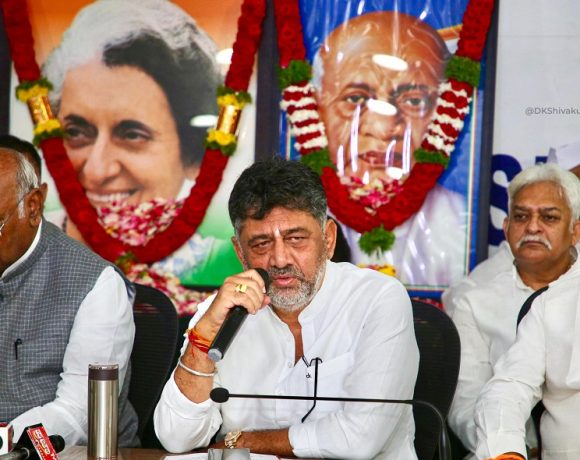
Proxy Wars, Real Deaths: The Dirty Profiteers Behind Ukraine, Palestine, and Pakistan’s Endless Conflicts
The idea that countries in economic freefall can afford to fight modern wars should have sounded ridiculous — until it became reality. Ukraine’s economy has shrunk by over a third, Pakistan is buried under insurmountable debt, and Gaza is barely habitable. Yet, each of these places is launching drones, testing missiles, and sustaining high-intensity warfare. The answer to how they can afford it lies not in their treasuries but in the foreign hands funding, fueling, and profiting from their misery. These nations aren’t fighting wars of choice — they’re fighting wars by contract, directed from war rooms thousands of miles away.
Weaponizing Bankruptcy: How Economies in Collapse Keep Waging War
One of the most glaring contradictions in global affairs today is the sight of war-torn or economically devastated nations engaging in high-tech warfare. Consider the numbers: Ukraine’s GDP contracted by over 30% since Russia’s invasion in 2022, yet it has managed to field long-range missiles, F-16s, and NATO-standard artillery. Pakistan’s economy teetered on default for most of 2023 and 2024, with foreign reserves dropping below $4 billion — and yet it launched airstrikes, tested tactical nuclear-capable missiles, and procured cutting-edge Chinese and Turkish drones. In Gaza, where unemployment has topped 45% and access to electricity, clean water, and medicine is minimal, Hamas continues to fire Iranian-supplied rockets and field surveillance drones.
The illusion of sovereign strength hides the real story: these are wars enabled by external funders, not internal capacities. When countries that can’t afford bread can still launch ballistic missiles, the conclusion is simple — someone else is picking up the tab.
The Blood Merchants: Who Is Really Arming These Nations?
The suppliers of death in these proxy conflicts are not hidden in the shadows — they’re corporations listed on stock exchanges, governments with geopolitical agendas, and regimes with regional ambitions.
In Ukraine’s case, the United States has emerged as the primary patron, having delivered over $70 billion in military aid since 2022, alongside additional funds from the EU and other NATO allies, totaling more than $175 billion. This military aid includes HIMARS rocket systems, Javelin anti-tank missiles, Patriot air defense batteries, and more recently, F-16 fighter jets. Beneficiaries? American defense giants like Lockheed Martin, Raytheon, General Dynamics, and European counterparts like Rheinmetall and BAE Systems. As per SIPRI, U.S. arms exports increased by 23% in the first 24 months of the Ukraine war.
Pakistan, officially bankrupt, is still acquiring high-tech defense gear. Its air force recently inducted advanced variants of the JF-17 Thunder, co-developed with China. The Pakistani Army deployed Turkish Bayraktar TB2 drones, bought despite IMF bailouts. The funding sources? A toxic cocktail of Chinese debt under CPEC, Saudi “friendly deposits,” and the misuse of international loans under the guise of development. Arms manufacturers from China (NORINCO, AVIC) and Turkey (Baykar Technologies) see Pakistan not just as a customer but as a field test site for hardware meant to compete globally.
Hamas in Gaza, perhaps the most resource-starved of the three, receives over $100 million per year in funding from Iran, funneled through Hezbollah and Quds Force operatives. It is equipped with Fajr-5 and Badr rockets, Ababil drones, and small arms, most smuggled via tunnels or delivered through clandestine routes. Qatar, under the guise of humanitarian aid, has also pumped $1.5 billion into Gaza since 2012 — with little transparency on how the funds were used. The result is clear: while Gazans suffer, Hamas has a functioning weapons program.
Proxy Logic: Strategic Goals, Zero Accountability
What links Ukraine, Pakistan, and Gaza is not just their economic fragility, but their strategic usefulness to larger powers. These wars aren’t grassroots uprisings or indigenous defense campaigns — they are proxy wars, where the true objectives are set by the sponsors, and the cost is paid by the people on the ground.
For Ukraine, the war is NATO’s golden opportunity to weaken Russia without deploying its own troops. The West gains everything: real-time performance feedback on modern weaponry, moral high ground in global diplomacy, and a rallying point to justify expanding military budgets. American think tanks like RAND and Brookings have openly acknowledged that Ukraine gives the West a “non-NATO war” where Moscow bleeds daily without Western boots on the ground. Every Patriot missile launched in Ukraine is a brochure for Raytheon’s next defense contract.
Pakistan serves a different but equally strategic role — a Chinese buffer state against India, and a historic fallback for Gulf countries like Saudi Arabia seeking military manpower and ideological leverage. China’s multi-billion-dollar investment through CPEC is not just infrastructure development — it’s a soft colonization with military leverage. In the past, even the United States exploited Pakistan as a regional pawn during the Cold War and the War on Terror. The Pakistani Army’s strategic culture of “plausible deniability” serves all its patrons well. They can hit India through terrorism, conduct limited wars, and yet remain a ‘partner’ on paper.
In Gaza, Hamas operates as Iran’s ideological and military outpost against Israel. Tehran doesn’t care about Palestinian statehood — it cares about bleeding Israel and distracting global scrutiny from its nuclear program. Every rocket launched from Gaza serves the dual purpose of depleting Israeli Iron Dome inventories and allowing Iran to test its asymmetric warfare doctrine. Meanwhile, Hezbollah in Lebanon and Shi’ite militias in Iraq and Syria are ready to replicate this model wherever Tehran wishes.
In all three cases, the true battlefield goals are not national, but transactional: test weapons, destabilize rivals, justify arms deals, and maintain strategic influence. And since these conflicts are outsourced, accountability never reaches the puppet-masters.
The Great Experiment: Turning War Zones Into Weapons Testing Labs
When wars become prolonged and externally funded, they evolve into something far more sinister — live laboratories for the global defense industry. Ukraine, Pakistan, and Gaza are no longer just conflict zones; they are test beds where weapons are trialed, data is gathered, and future export pitches are crafted in real-time.
Ukraine is perhaps the most advanced war lab in the modern world. The U.S. has deployed Switchblade loitering drones, Phoenix Ghost systems, and upgraded M777 howitzers, observing their battlefield performance against a sophisticated adversary like Russia. The use of HIMARS missile systems and Western artillery has given NATO deep insight into counter-battery effectiveness, guided strike precision, and logistical endurance in a full-scale war. Companies like Lockheed Martin and Northrop Grumman use this data to refine future designs and secure future contracts with hard evidence — often tested with Ukrainian lives.
Pakistan serves the same purpose for China and Turkey. During the 2024–25 Indo-Pak border escalations, Pakistan launched PL-15 and Fateh-110 missiles — both with Chinese and Iranian origins — against Indian targets. These missiles were intercepted by India’s S-400 systems and Akash air defense grid, providing China and Iran with indirect feedback on radar signatures, evasion tactics, and response times. Turkish Bayraktar drones, made famous in Azerbaijan, were deployed by Pakistan for reconnaissance — providing Ankara with valuable insights into survivability against modern Indian anti-drone systems. Every such deployment becomes a real-world performance trial, the results of which are fed back into upgrade cycles and sales pitches abroad.
Gaza, under Hamas control, has been turned into Iran’s proxy weapons demo. Iranian-supplied Ababil drones and precision-guided munitions have been used against Israeli targets, testing Israel’s Iron Dome, David’s Sling, and Arrow missile systems. For Iran, each escalation is a case study — what gets past Israeli defenses, how much saturation is needed, what tactics force Israeli retaliation. For Tehran, this is a strategic simulation, for Gazans, it’s a death sentence.
Add to this the geospatial, signal, and electronic warfare capabilities being tested. Pakistan’s use of Chinese EW systems and jammers against Indian S-band radars is not about short-term military gain — it’s about sensor data collection and fine-tuning next-gen AI warfare algorithms. Ukraine’s battlefield has become a testbed for NATO ISR (Intelligence, Surveillance, Reconnaissance) networks, while Gaza’s tunnel systems and asymmetric strategies are now being integrated into Hezbollah’s and Houthi warfare blueprints.
These are not random wars. These are multi-billion-dollar research fields, where death is the currency and every explosion is logged and analyzed by a contractor, a general, or a foreign government.
Collateral Damage: The Human Cost Nobody Accounts For
In the power games of proxy warfare, the one stakeholder with no say is the civilian population. While superpowers gather combat data and defense companies log performance metrics, the people on the ground count body bags, bury children, and live under perpetual fear. The human cost is staggering — and worse, it is normalized by the very sponsors claiming to uphold global peace and human rights.
In Ukraine, over 30,000 civilians have died since the war began, and millions have fled their homes, creating one of the largest refugee crises in modern Europe. Entire cities like Mariupol and Bakhmut have been reduced to rubble. Western analysts call this “strategic depth” or “attritional warfare” — but for ordinary Ukrainians, it’s daily loss and trauma. Meanwhile, reconstruction loans are being packaged — meaning the same Western bloc that funded the war will now fund the rebuilding, profiting twice.
Gaza has seen repeated wars since 2008, each more destructive than the last. During just one recent escalation, over 14,000 people died, with nearly half of them women and children. Hospitals, schools, and refugee shelters — often funded by the UN or foreign donors — have been struck down in missile exchanges between Hamas and Israel. While Iran views this as a front in its ideological war with Tel Aviv, and Israel sees it as a defensive necessity, Gazan civilians are caught in a never-ending cycle of siege, starvation, and shrapnel.
Pakistan, though not in an open declared war, suffers a slower but equally brutal bleed. Civilians in Balochistan, Khyber Pakhtunkhwa, and border villages near India are collateral in Pakistan’s military adventures. Whether it’s displacement due to “counter-terror ops” or deaths from Indian retaliatory strikes, it’s always the same: the elite plan, the military executes, and the poor suffer. The people of Pakistan, especially in its peripheries, are nothing but expendable buffers in the Army’s long-standing strategy of “strategic depth.”
Notably, these wars also rob societies of progress. Schools close, agriculture collapses, industries flee, and the youth are radicalized or conscripted. The cost is not just measured in lives lost — but in generations ruined.
And yet, not a single sponsoring nation or weapons supplier faces any consequence. The Geneva Conventions, international human rights laws, and UN charters are selectively quoted, rarely enforced. Civilian pain becomes a line in a press release — collateral, not consequence.
Follow the Money: How War Profiteers Win Every Time
While bombs fall in Kyiv, Rafah, and Rawalpindi, someone is always cashing a cheque in Washington, Ankara, Tehran, or Beijing. Behind every missile launch and drone strike is a supply chain of profit, and the true winners of these wars are not nations or ideologues — they’re the arms manufacturers, financial institutions, and defense lobbyists who thrive on sustained conflict.
Let’s look at the numbers. Since the beginning of the Ukraine war in 2022, Lockheed Martin’s stock price has surged by over 40%, boosted by soaring demand for HIMARS, Patriot systems, and F-16 upgrades. Raytheon secured billions in fresh Pentagon contracts for Stinger missiles and radar systems. General Dynamics, which makes Abrams tanks, posted record quarterly profits during key phases of the war. Every shipment to Ukraine is not a loss; it’s future advertising. These companies are not donating — they’re investing in live marketing.
In Turkey, Baykar Technologies, which manufactures Bayraktar drones, used combat data from Libya, Azerbaijan, and Pakistan to expand its client base to over 30 countries. After drones were deployed in Kashmir and near Indian positions, several Southeast Asian and African countries entered negotiation talks with Ankara. War in Pakistan became a product demo, and every conflict zone a showroom.
Iran’s drone economy has similarly flourished. Post-Gaza, Iranian drones like Shahed-136 and Ababil became sought-after tools by Houthi rebels in Yemen, Shi’ite militias in Iraq, and even by Russia, which allegedly deployed modified Iranian drones in Ukraine. Tehran has essentially created a black-market military export industry under the guise of “resistance,” complete with field testing, reverse engineering, and regional partnerships.
Then there’s the financial side. The IMF and World Bank extend aid and recovery loans to war-impacted countries, many of which are misappropriated by corrupt regimes or funneled into defense. In Pakistan, portions of IMF bailouts mysteriously coincide with new arms acquisitions. In Ukraine, reconstruction estimates run into hundreds of billions — contracts already being secured by the very countries that supplied the weapons. It’s a full-circle business: destroy, fund, rebuild — and profit from each step.
Meanwhile, local populations are buried under debt, taxes, and destruction. But the global war economy marches on, immune to morality, sustained by contracts, and emboldened by silence.
The Victims Don’t Choose War — Their Sponsors Do
Strip away the propaganda, the political speeches, and the carefully worded press briefings, and you’ll find one truth standing tall in the rubble: the people trapped in these proxy wars never chose them. The decision to fight, to escalate, to retaliate — these are not democratic mandates or grassroots uprisings. They are decisions made in foreign capitals, elite boardrooms, and military think tanks, far removed from the screams of the wounded and the silence of mass graves.
Ukrainians, by and large, wanted peace and stability. They did not vote to become NATO’s forward line against Russia. They did not ask for cities to be used as artillery shields or civilians to be drafted into geopolitical games. Zelensky may have rallied global support, but the long-term agenda is Western, and its costs are paid in Ukrainian blood and debt.
Gazans, who live in what has often been described as an open-air prison, have no control over Hamas’ choices or Iran’s funding. The majority of civilians want an end to the cycle of bombardments and blockade. But they are trapped — between an occupying force on one side, and a militant organization backed by a foreign power on the other. They are fodder in an ideological war that has nothing to do with schools, food, or shelter — the things they actually need.
Pakistanis, especially the poor and marginalized, have suffered decades of militarization and strategic adventurism. No one in Sindh or Balochistan or Waziristan asked their country to host terror groups, antagonize neighbors, or become a pawn in China’s regional ambitions. Yet, their homes are raided, their schools bombed, and their futures sacrificed in the name of “national security” — a term that really means military supremacy controlled by generals, not citizens.
These are not wars of liberation, justice, or survival. These are wars of convenience, where decisions are made by those who will never pay the price. The victims are silenced, scapegoated, or simply erased from headlines once the next contract is signed or the next missile is launched.
In a just world, the powerful would answer to the people they claim to protect. In ours, they sign weapons deals while attending human rights conferences.
A World That Needs Peace, But Profits From War
In an age where international diplomacy claims to uphold human rights, democratic values, and peacebuilding, nothing exposes the hypocrisy more than the persistence of profitable, well-funded wars in some of the world’s poorest regions. The truth is brutal but simple: peace doesn’t pay, war does. And so long as that remains the global incentive structure, these proxy wars will never truly end — they will only shift locations.
Ukraine, Palestine, and Pakistan are not the exceptions; they are the blueprint. Future conflicts in Africa, Southeast Asia, and Latin America will likely follow the same model — economically crippled, politically compromised, but strategically positioned enough to attract external funders, military advisors, and arms dealers.
The global powerhouses — the United States, China, Iran, Russia, Turkey, and Gulf monarchies — are not arming these nations out of altruism. They are not defenders of liberty or religion or justice. They are investors in instability, harvesting influence, military data, and profit while the rest of the world watches through filtered headlines and carefully curated outrage.
The defense lobbies in Washington, Beijing, and Tehran don’t fear peace — they fear irrelevance. The absence of war means no new arms contracts, no geopolitical leverage, and no justification for bloated military budgets. The real enemy, to them, is a world that doesn’t need them.
Until global citizens recognize this cycle and demand accountability from both war enablers and war profiteers, the suffering will continue. Civilians will keep dying in cities they didn’t choose to defend, under flags they didn’t raise, for ideologies they didn’t vote for.
It’s time we stopped glorifying proxies as patriots, or justifying sponsors as saviors. The world doesn’t need more defense analysts. It needs a defense — from this endless, industrialized bloodshed.


















